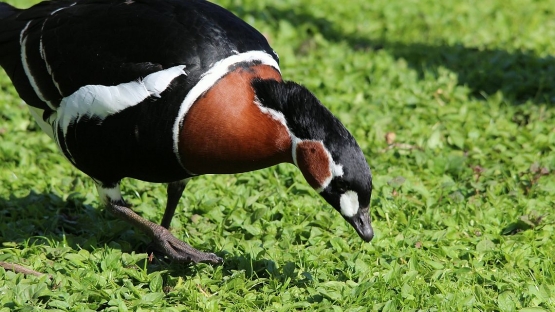When outbreaks of disease happen, locating the origin and pattern and its transmission are of critical importance — and isotope techniques can help.
In cases of zoonotic diseases, (which are those transmitted from animals to humans), this involves a detailed understanding of the migration of animal carriers. Migratory birds can pose a special challenge, given the vastness of their geographical ranges and the sheer numbers of individual birds to track.
“Historically, when outbreaks of avian influenza occur, tracking their origin and pinning their location down in real time has been very challenging,” said Gerrit Viljoen, Head of the Animal Production and Health Section of the Joint FAO/IAEA Division of Nuclear Techniques in Food and Agriculture, adding that the Joint Division launched a phase-1 coordinated research project (CRP) in 2012 to develop isotope techniques for tracing the origins of migratory birds and predicting the patterns of their flight, thereby enabling scientists to model the spread and transmission of the disease.
The phase-1 CRP improved the techniques for localizing the origins of migratory birds and for monitoring and tracing the spread of pathogens. Comprehensive algorithms were developed, resulting in geographical maps that display the probabilities of origin of the avian flu carrier birds based on their stable isotope signatures. These maps link to data for birds that migrate over East Asia, through the European mainland to Central Africa, said Viljoen.
The isotope ratios in bird feather samples can be integrated with the isotopic maps to trace the bird’s migratory origin to a specific location. Combining these data with existing knowledge of migration patterns allow predictions of when new areas will become risky as potential sources of infection via wild migratory birds.
The effectiveness of this technique is due to the unique ratios of different stable isotopes in different environments. Because animals, including birds, interact continuously with their surroundings, their bodies become carriers of the isotopic signatures of these specific geographical locations. This allows scientists to determine where a particular bird comes from, which in turn helps determine where it’s headed, thereby revealing which areas are in danger of being exposed to an outbreak of avian influenza.
Specific research objectives:
The phase 2 CRP now being launched by the Joint FAO/IAEA Division aims to generate a deeper understanding of the origin and migration of wild birds and of the disease pathogens, such as avian influenza or Newcastle disease, they might carry. The additional information will enhance knowledge of the major pathways of disease transmission through migratory birds.
The overall objectives include:
- Detecting wild birds that carry avian influenza viruses and, eventually, other potentially dangerous pathogens, and to evaluate the molecular epidemiology of these pathogens.
- Investigating the origin of the wild birds that carry dangerous pathogens through the stable isotope signatures for example in their feathers, claws, or beak.
How to join the CRP?
Eligible partners for the CRP are entities or institutions that are already involved in the official monitoring programmes for avian influenza in Member States and that have established links with teams responsible for the sampling of wild migratory birds.
Proposals for Research Contracts or Agreements should be submitted, preferably via email, by 31 December 2017 directly to the IAEA’s Research Contracts Administration Section, using the appropriate forms on the CRA web site.


